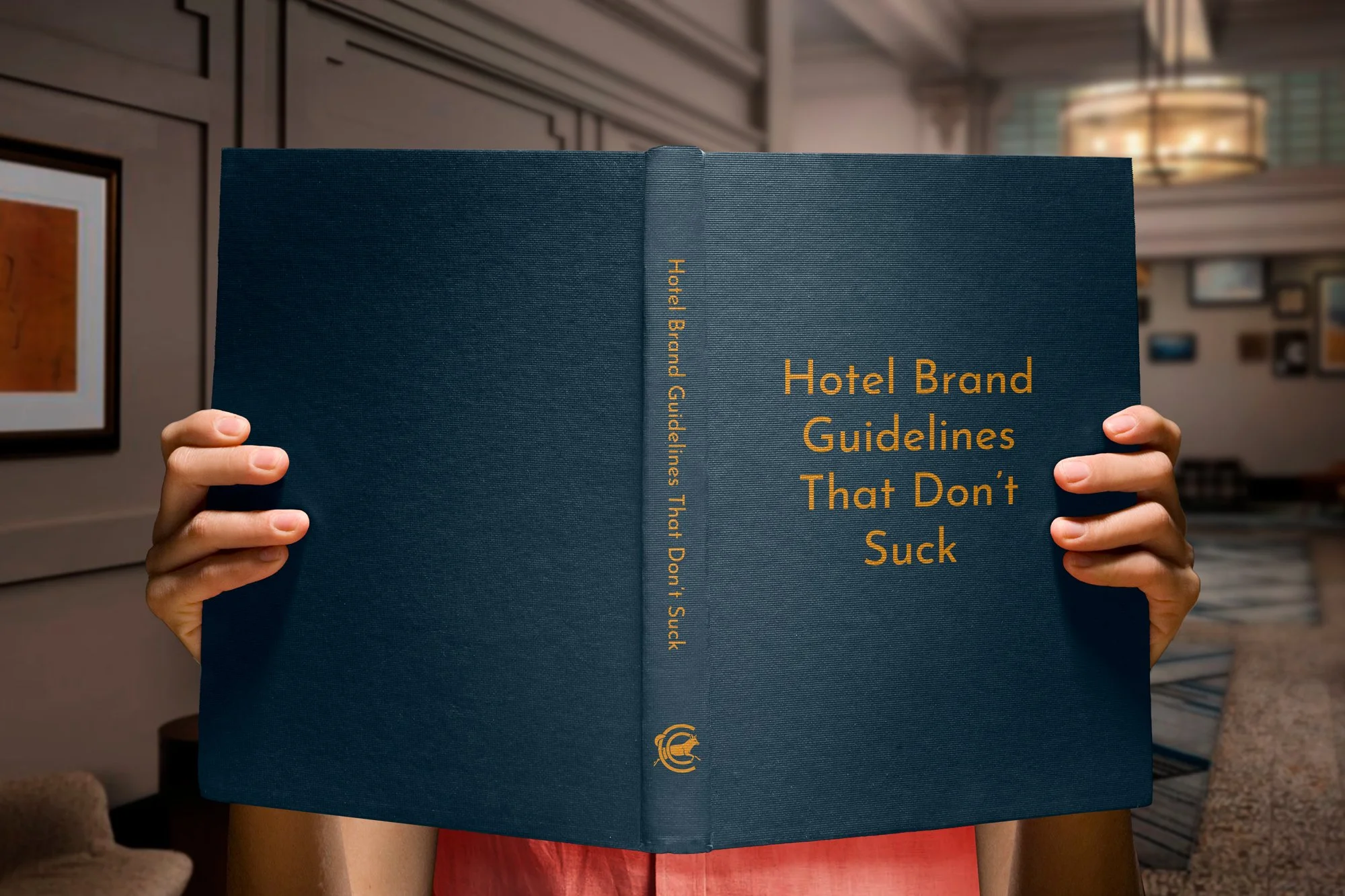What Makes a (Good) Hotel Brand Guide?
by Mike Metz
Full disclosure: I’m that design nerd who prefers a graphic standards manual for leisurely reading. I’m fascinated by how brands are built, and a beautiful brand identity system can scratch that inspiration itch. Logo design, typography, color palettes, usage guidelines—even after 25+ years as a designer and creative director, they never get old. It’s the stuff of wistful daydreams—that and playing professional soccer, but that’s a different story.
As a creative agency serving the hospitality industry, brand guidelines are part of everyday life. If we’re not building them, we’re applying them. They’re essential in steering how a brand is portrayed—establishing its visual and verbal identity and setting rules to do so consistently across all communication channels.
No two brands are the same, and neither are their guidelines. They vary in scale, depth, format, interface, style, etc. Some are great. Some are small. And some are good, while others are, well… less good. When done well, brand guides are more likely to help brands achieve a desired perception among their target audience.
Let’s get into what sets a good hotel brand guideline apart from the rest.
Wait, do I even need a brand guide?
Guidelines are not an absolute necessity. Neither are pants, but things can get awkward without them at times. If you want your marketing and advertising to convey your brand consistently and effectively, they’re definitely in your best interest. Trust me, I’m a designer.
Start with Strong Branding
It never hurts to start with a solid brand positioning and visual identity to lean on. This will provide the foundation for alignment and clarity of how your brand comes to life.
Need help with your branding? We have you covered.
Know Your Audience
Who will be the end user? For the hospitality industry, this consists of marketing teams at the brand level and partner creative agencies. These groups can deliver high-level executions of your brand communications. The lingo and design decisions that go into your guidelines are nothing new to this group. This audience can become your brand's strongest ambassadors—they bring it to life. Ensure they have everything they need to feel empowered to apply it correctly.
You must also consider who will implement your brand at the property level. This group might be marketing savvy but are typically not designers or creatives. Imagine your ad layouts feature intricate typography. Your visual identity is compromised if the salesperson using Canva or Microsoft Office products can’t pull off the look. Help guide them to success with the tools and skillset available to them. In the case of challenging visual executions, pre-built templates in commonly used software may be the way to go. Provide guidance specific to your end user and keep possible limitations in mind.
Whoever your audience is, connect with them. Have a conversation with them about your brand. Follow up to see if they have any questions or what they need to be successful.
Keep Guidance Clear and Consistent
Basic brand guidelines should consist of logo usage, typography, color palette, design elements, voice, and brand positioning. Expanded versions can become hundreds of pages, getting into the weeds of your logo's appearance on a matchbook or language for email salutations. Whatever’s included, there’s no point in a guide if it isn’t understood or lacks uniformity. In short, make it make sense. Let common sense prevail. If questions and requests for clarification arise, it’s a sign that your direction is unclear.
Provide a rationale for why certain design decisions are essential to follow. Let’s say you have five colors in your palette, with two primary and the rest accents. Give concrete examples of how to use the colors in context and even go so far as to explain why this design decision was necessary. Always connect back to your positioning. This reinforces the principles of your brand.
Provide Helpful Assets
Links to logo files, fonts, and design elements such as patterns or iconography should be a given. Take it a step further and provide templates for standard deliverables and formats. Layouts for social media posts and reels, presentations, banner ads, signage, flyers, and even email signatures go a long way to help establish consistency. Think about where your branding will live on property or in marketing communications. The more assets you provide, the more guesswork you take out of implementing your brand. If not actual templates, provide as many conceptual examples as possible.
Allow for Flexibility
Be flexible, but set boundaries. It’s impossible to anticipate and provide examples for every possible marketing communication. A crucial requirement of a good brand guide is to provide information on creating deliverables from scratch that align with your brand. This empowers end users to make confident decisions.
Revisit and Refine
Brand development is a process. We often come across guidelines with visual aesthetics that are nice in theory but fall apart in application. Most brand design teams cannot command the years-long effort to perfect every detail of a visual identity before rolling it out. In today’s need-it-yesterday marketing world, brands are developed relatively quickly and often need refinement to ensure they work well across the board. Ever-changing content formats (thanks, Instagram) require constant bending and molding of design elements. Treat your guidelines as a living, breathing document and update them regularly to ensure they are most helpful for the user and practical in application.
See our work within the hospitality industry
and how our services can help you.

